November 22, 2024 | 23:05 GMT +7
November 22, 2024 | 23:05 GMT +7
Hotline: 0913.378.918
November 22, 2024 | 23:05 GMT +7
Hotline: 0913.378.918

Deputy Minister of Agriculture and Rural Development Tran Thanh Nam surveys at Phat Tai Agricultural Cooperative. Photo: HT.
On March 14, Deputy Minister of Agriculture and Rural Development Tran Thanh Nam and his delegation visited the implementation site of the Scheme of 1 million ha of high quality rice in Chau Thanh district, Tra Vinh province. The leader of the National Agricultural Extension Center, the leader of Tra Vinh province, businesses accompanying cooperatives and farmers in the region participate in this event.
At the survey points, Deputy Minister Tran Thanh thoroughly learned about the cooperative model from the principles, establishment mechanism, pros and cons of the model, purchasing organization and benefits brought to cooperative members and contributions of local agricultural extension force.
According to Tran Van Chung, Chairman of the Board of Directors of Phat Tai Agricultural Cooperative, in the past, farmers' agricultural production faced many difficulties. Realizing the State's strategy to promulgate policies encouraged the development of agriculture, farmers and rural areas in the direction of industrialization and modernization, along with the propaganda campaign of the agricultural sector, the people saw benefit from the cooperative model.
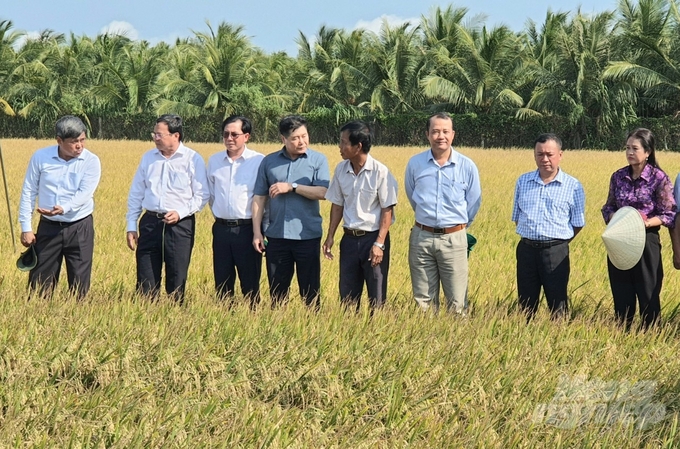
The average rice yield in 2023 of Phat Tai Cooperative members reached 7 tons/ha, which resulted in a profit of over VND 40 million/ha. Photo: HT.
Since its establishment in September 2017, the cooperative has created a solid foundation for its members. This is clearly proven by the fact that the cooperative is receiving many applications to join from farmers in Thanh My commune and neighboring communes.
“It’s not like every member does things to their preference in an unorganized manner. They all receive training in science and technology and work simultaneously according to a controlled process. Agricultural extension officers are the direct instructors. Therefore, the rice here not only has high productivity but also meets quality requirements, food safety and hygiene, and is trusted by affiliated units,” said Chairman Chung.

Chairman Tran Van Chung (far right) introduces the 3-in-1 rice dryer he built himself. Photo: HT.
As for Phuoc Hao Agriculture Cooperative, Deputy Minister Tran Thanh Nam surveyed a model of rice fields produced in the organic and low-emissions direction and saw a demonstration of spraying with drones. On this occasion, the cooperative’s representative expressed the need for more technical training to ensure stable output when participating in the Scheme of 1 million ha of high quality rice.
“The survey sites are eligible to participate in the Scheme of 1 million ha of high quality rice. The province should promote communication to raise farmers' awareness of applying technical advances in rice farming to reduce emissions, strengthen training and technology transfer, as well as build community agricultural extension forces to develop low-emission rice production in Tra Vinh," said the Deputy Minister.
Tra Vinh has its own unique characteristics, different from some other provinces due to its location at the downstream end, which demands flexibility and appropriate seasonal production arrangements. Chairman of Tra Vinh People's Committee Le Van Han said, “Tra Vinh has 3 different areas, so we had to come up with 3 different production schedules to ensure that water is enough for the production needs of the people. The province has thus invested hundreds of billions of VND in building water pumping stations to secure the water source even during a time of severe saline drought”.

Rice production fields follow the organic and low-emissions direction associated with synchronous mechanization at Phuoc Hao Agricultural Cooperative, Phuoc Hao commune, Chau Thanh district, Tra Vinh. Photo: HT.
According to Deputy Minister Tran Thanh Nam, the Scheme is implemented in 12 Mekong Delta provinces (except Ben Tre province) and divided into 2 phases. Phase 1 (2024 - 2025) focuses on consolidating the existing 180,000 ha of the Vietnam Sustainable Agriculture Transformation Project (VnSAT).
Phase 2 (2026 - 2030) identifies the focus area to establish investment projects to develop new high quality and low-emissions specialized rice areas. During this period, the main activities will be investment in new areas based on completing infrastructure, reorganizing production, and building value chains.
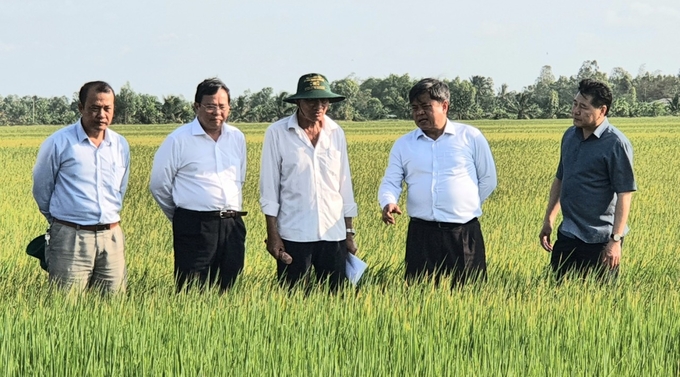
Deputy Minister Tran Thanh Nam (2nd from right) and Chairman of Tra Vinh People's Committee Le Van Han (2nd from left) surveyed at Phuoc Hao Cooperative. Photo: HT.
According to the requirements of the Scheme, the community agricultural extension system is the core force that will implement a number of key contents and solutions such as disseminating information to raise awareness, applying technical advances in low-emissions rice farming, building demonstration and training models for farmer households, cooperatives, cooperative groups and farmer organizations.
Rice growing households and cooperatives will receive training on sustainable farming and straw treatment methods, gain more knowledge about environmental protection, climate change response, management, business, marketing, and digital transformation.
"To implement the Scheme successfully, the agricultural extension system, especially the community agricultural extension force, will play a core role in the implementation process. It needs to work alongside farmers, helping them reorganize production and improve capacity, and ultimately serve as a bridge between farmers and businesses," Deputy Minister Tran Thanh Nam said.
Translated by Samuel Pham
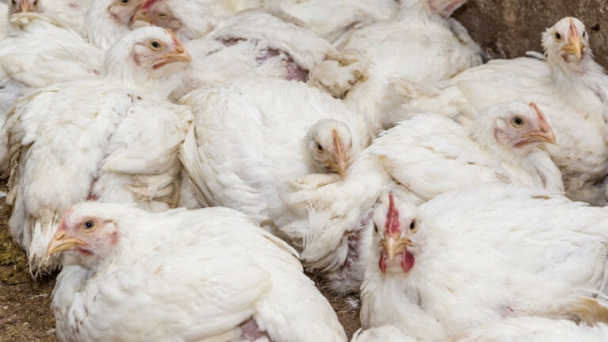
(VAN) EU Poultry, a Slovak poultry processor owned by Ukrainian businessman Dmytro Borodavka, has rolled out plans to invest almost €50 million into capacity expansion in the country.
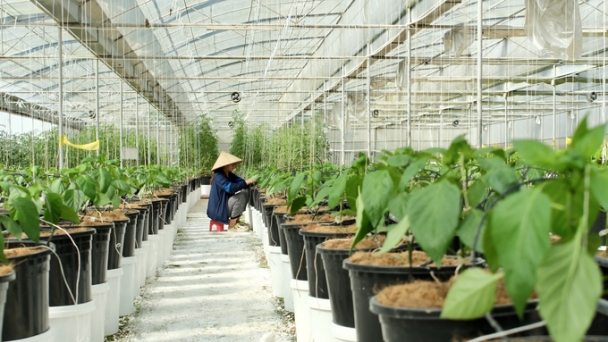
(VAN) Farmers in Moc Chau are capable of high-tech agricultural production. Therefore, any support for investing in net houses and greenhouses should be carried out on a large scale.
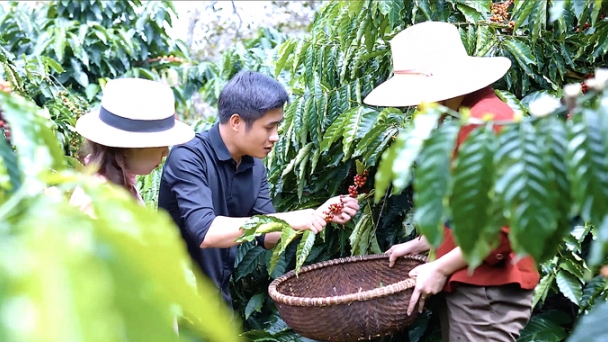
(VAN) "Our goal is to collaborate with farmers in cultivating organic coffee and delivering high-quality products with a distinct flavor to our customers."
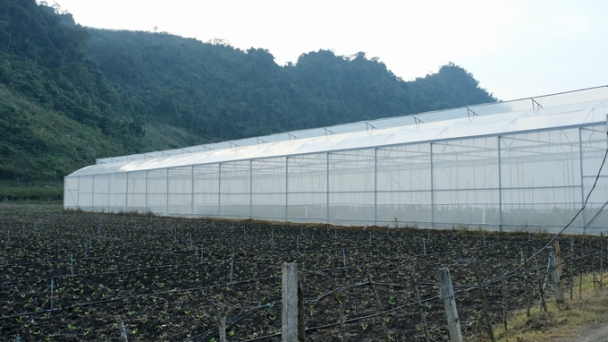
(VAN) The formation of a concentrated vegetable production area offers significant benefits, including reducing import of certain vegetables from China.
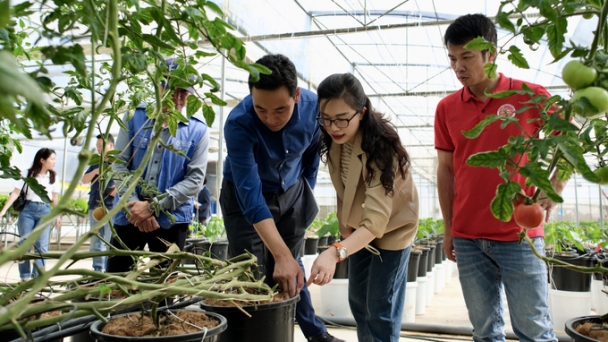
(VAN) A key feature of these models is the use of Nutrient Film Technique (NFT) recirculating irrigation technology, which is fully automated.
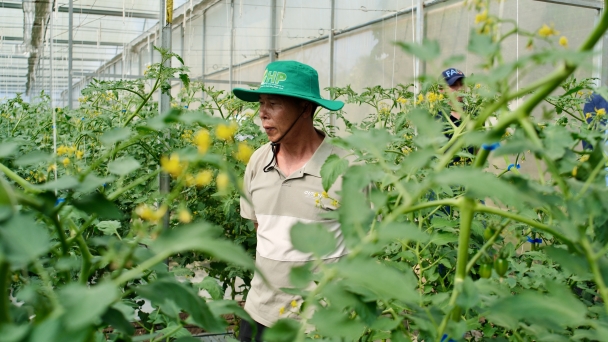
(VAN) At 53 years old, Mr. Ha Van Tien is determined to develop standardized greenhouses to supply organic vegetables and fruits for the clean agricultural products market.
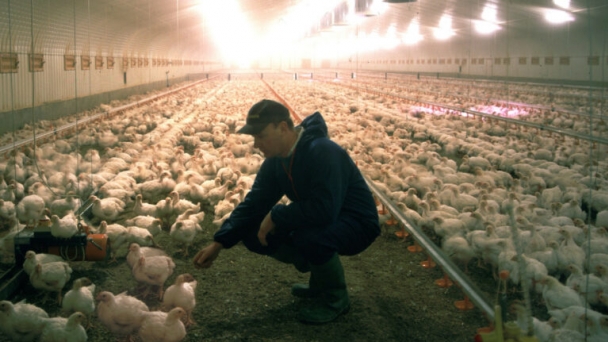
(VAN) Feed isn’t just fuel for poultry; it’s the foundation of health and growth. Accounting for up to 70% of production costs, feed quality directly impacts gut health, nutrient absorption, and feed efficiency.